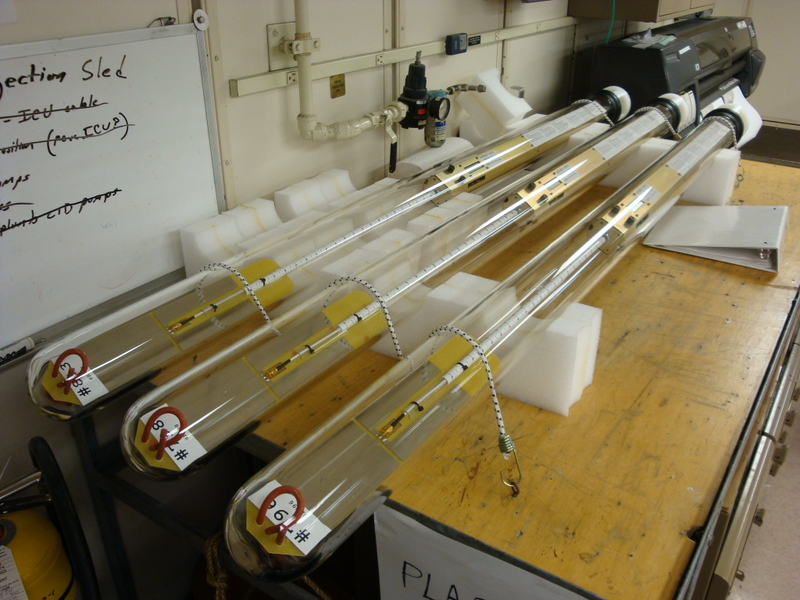Cruise RR0901 Update29 January 2009
We made it as far as 58 S, on 25 January, with our CTD/XBT casts, when we found that one of the crew members was suffering some heart trouble which required him to be brought back to shore as quickly as possible. We have just now left him off in Punta Arenas, after a fast 4-day steam with the wind, seas and current at our back. Now we must return against those same winds, seas and currents, to return to our site, which might take a little longer.
At the time we left we had covered the line from 50 S to 58 S, along 105 W, with our CTD and XBTs. Also along that line we released 36 “RAFOS” floats in sets of three. These “floats” don’t actually float at the surface. They are precisely ballasted to be neutrally buoyant at the temperature, salinity and pressure found at the density level that serves as the focus of our experiment, which is about 1500 meters deep. These floats have acoustic receivers on board which listen for the sound pulses from the sound sources we deployed on mooring lines earlier in the cruise. From the timing of the pulses from two or three sources, the position of the floats can be determined later on. “Later on” means after two years in most cases, when the floats come to the surface and relay all their data to a land station via satellite.

Caption: Three RAFOS floats, ready for launch. The glass tubes can withstand pressures to about 20 atmospheres, or about 2000 meters depth in the ocean. There is a device at the far end which is compressible and gives the floats about the same compressibility as seawater so that the floats move up and down roughly with the water they are following. This device is dropped when the time comes for the float to surface. The scrolled scale inside the glass tube is used during ballasting. The electronics in the metallic enclosure near the end enable the floats to record sound arrival times and the pressure and temperature of the water as they travel, and also enable these data to be transmitted to land via a satellite connection when the float is on the surface.
Our plan when we get back is to finish the CTD/XBT line and float release between 60 S and 58 S. We will have to forgo sampling any farther south due to the unanticipated trip to Punta Arenas and back, but the essential goals of the cruise can still be met: to deploy the sound sources (done), the RAFOS floats (half-done) and our tracer (still to be done). We also have some special floats to deploy, which will be described later, and we would like to document the vertical distribution of the tracer shortly after release. Our CTD/XBT data and the satellite altimetry should tell us where, relative to the fronts and mean sea surface elevation, we will have placed the floats and the tracer.